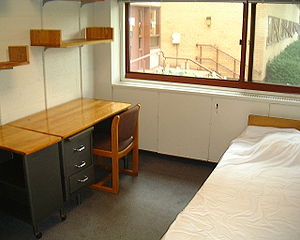I was recently involved as a commissioning agent in a new dormitory project where the owner was very clear with the contractor about his expectations for the 80+ fan coil units serving the student rooms. The directive was: don’t connect them to the building’s BMS system (to save money) and they must have temperature set point limits. That’s it. Well, the first requirement was easy but the second, while seemingly straightforward, proved to be more difficult than any of us would have imagined.
Essentially, the team ran into a perfect storm. To save first cost, this system was designed as a 2-pipe fan coil system. That’s one where in the summer chilled water is pumped through the piping system for air conditioning and in the winter, hot water for heating. The alternative, a 4-pipe system where hot and chilled water have separate, dedicated piping systems, has twice the amount of piping, valves and insulation and can add significant cost to a project. The two-pipe arrangement means the thermostat has to know whether there’s hot or chilled water in the system. That avoids someone turning the thermostat down because they think they’ll get cold air only to find hot air blowing out of the fan coil or vice versa.
How does the fan coil “know” whether there’s hot or chilled water? Well, a simple temperature sensor on the pipe will do it. Ah, but it ain’t so simple after all. Each thermostat needs one of those sensors. Where do you put them? In the pipe that enters the fan coil, right? Sure, but that means that the thermostat has to open the control valve to let water flow before the fan starts. That’s how it checks the water temperature. Without flow, it can’t be sure whether there’s hot or chilled water available. Not to worry, there are thermostats that do this, but we just reduced the number of options, significantly.
Lesson 1 – We should have put the pipe sensors on the mains, not the coil connections. Doing that would have eliminated the need to cycle the control valve and would only have required about 10 more feet of wiring for each sensor. The valve cycling capability was a biggie in terms of limiting our thermostat options.
Because the school intended on renting these dorm rooms in the summer, they were conscious of good temperature control. The engineer did what we all thought was the right thing – he called for a modulating water valve. That means that the valve would open and close slowly in response to calls for heating or cooling. The alternative would have been a 2-position valve which would simply open fully when needed and close completely when not needed.
Lesson 2 – Don’t bother with a modulating valve for a dorm room. Sure, the air temperature resulting from 2-position valve control has wider swings than from modulating control but after all, these are dorm rooms. When they’re rented in the summer, they don’t magically transform into luxury suites…they’re still dorm rooms. Modulating control was another significant limiting factor in the available choice of thermostats, especially when combined with the valve cycling in Lesson 1.
The submitted thermostat was one that did not have temperature set point limits but could perform the valve modulation and valve cycling functions. No one who put their eyes on the submittal caught the omission of the set point limits.
Lesson 3 – Remember what the owner wants. He wanted set point limits and didn’t get them because no one scrutinized the submittal to ensure they were there.
So what’s the solution? Replace the thermostats, right? Wrong. Why? Here’s one more thing to keep in mind…all pipe temperature sensors are not created equal. The thermostats that were submitted utilize 10,000 ohm thermistors to sense the pipe temperature. All the other suitable replacements we found utilize 20,000 ohm thermistors. So in order to change the thermostat you’ve got to change the pipe sensor too. As of the writing of this post no solution has been agreed upon yet. No matter what is decided, it’s going to cost time and money to change something.
Lesson 4 – Remember to KISS! That’s right, keep it simple, stupid! None of us on the team, including the engineers, the owner, the contractor or, admittedly, the commissioning agent (that was me) stopped to say, “Hey guys, this is way too complicated.” In fairness to all, the complete picture of all the requirements and limitations wasn’t in place until it was too late – once we all started looking for a replacement thermostat.
I have to wonder, even if this were executed correctly to begin with, what the incremental cost would have been to simply integrate the units into the BMS. There would be 80 fewer pipe sensors to purchase and install, but you’d have to add the cost of the controllers and Ethernet cabling. Programming time would be inconsequential since it's one program for 80 units. BMS integration would have allowed the building operator to have full control over temperature limits, set points, scheduling, etc.




